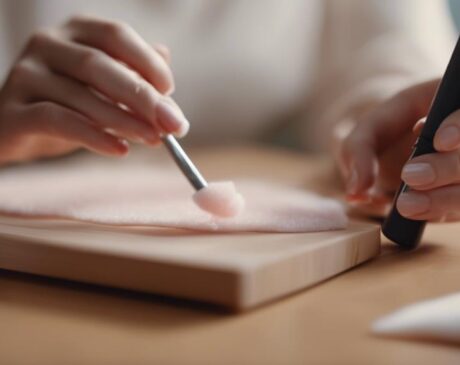What Diseases Do Nail Technicians Get?
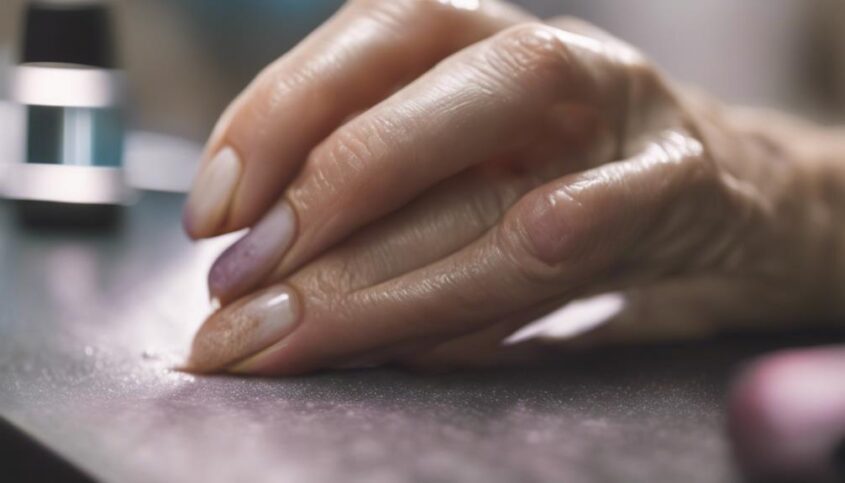
Nail technicians can develop respiratory issues, skin disorders, and musculoskeletal problems from chemical exposure and poor workplace ergonomics. Contact dermatitis, fungal infections, and allergic reactions are common due to chemicals like formaldehyde and toluene. Proper ventilation, masks, and ergonomic tools are crucial for minimizing risks. Further, staying informed on chemical safety and using personal protective equipment can help prevent health issues. It's important for nail technicians to prioritize their health in the salon environment.
Key Takeaways
- Skin disorders like contact dermatitis and fungal infections are common among nail technicians.
- Respiratory issues can arise from constant exposure to volatile organic compounds in nail products.
- Musculoskeletal problems may develop due to repetitive motions and awkward positions during work.
- Allergic reactions to chemicals like formaldehyde, toluene, and dibutyl phthalate can occur.
- Safer alternatives, proper ventilation, and personal protective equipment help mitigate health risks.
Chemical Exposure Risks
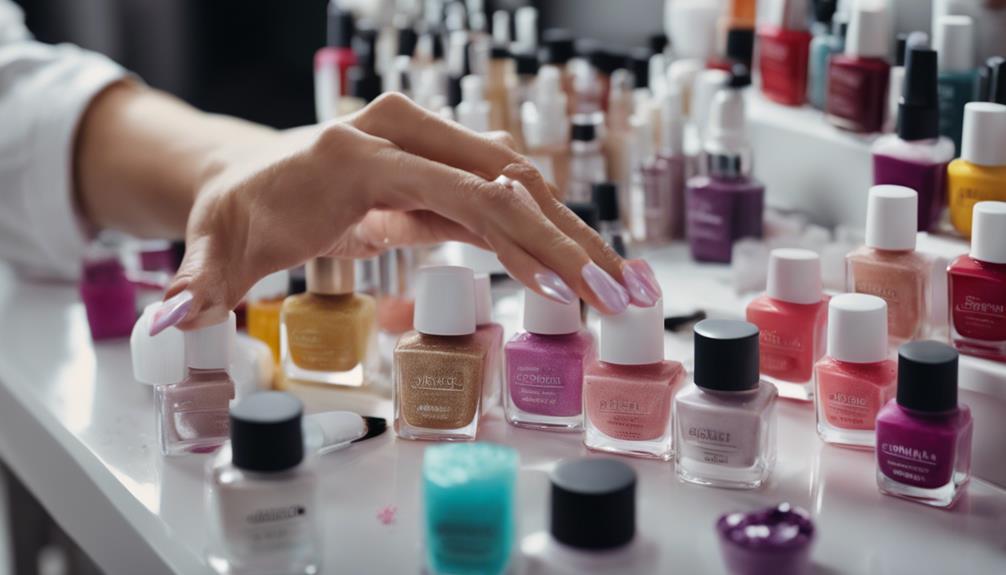
Nail technicians face potential health risks due to prolonged exposure to various chemicals commonly used in nail salons. The chemicals present in nail products, such as formaldehyde, toluene, and dibutyl phthalate, can lead to respiratory issues, skin irritation, and even long-term health complications. Innovation in the nail industry has led to the development of safer, low-toxicity alternatives, but awareness and proper safety measures are still crucial.
One innovative solution to reduce chemical exposure risks is the use of ventilated nail tables and masks to minimize inhalation of harmful fumes. Additionally, the implementation of green chemistry principles in formulating nail products can help create safer working environments for nail technicians. Regular training on chemical safety and the proper use of personal protective equipment are also essential in preventing adverse health effects.
Skin Disorders
Prolonged exposure to chemicals in nail products can not only lead to respiratory and other health issues for nail technicians, but it can also contribute to the development of skin disorders. Skin disorders are a significant concern in the nail technician profession due to the constant contact with various irritants and allergens present in nail products. One common skin disorder is contact dermatitis, which presents as red, itchy, and irritated skin. This condition can be caused by direct contact with ingredients like formaldehyde, toluene, and dibutyl phthalate commonly found in nail polishes and acrylic nails.
Moreover, fungal infections, such as onychomycosis, are also prevalent among nail technicians. Fungi thrive in warm and moist environments, making nail technicians more susceptible due to the prolonged exposure to water during manicures and pedicures. It is crucial for nail technicians to practice good hand hygiene, wear appropriate personal protective equipment, and seek prompt medical attention if they suspect any skin abnormalities to prevent the development and spread of skin disorders in the workplace.
Respiratory Issues
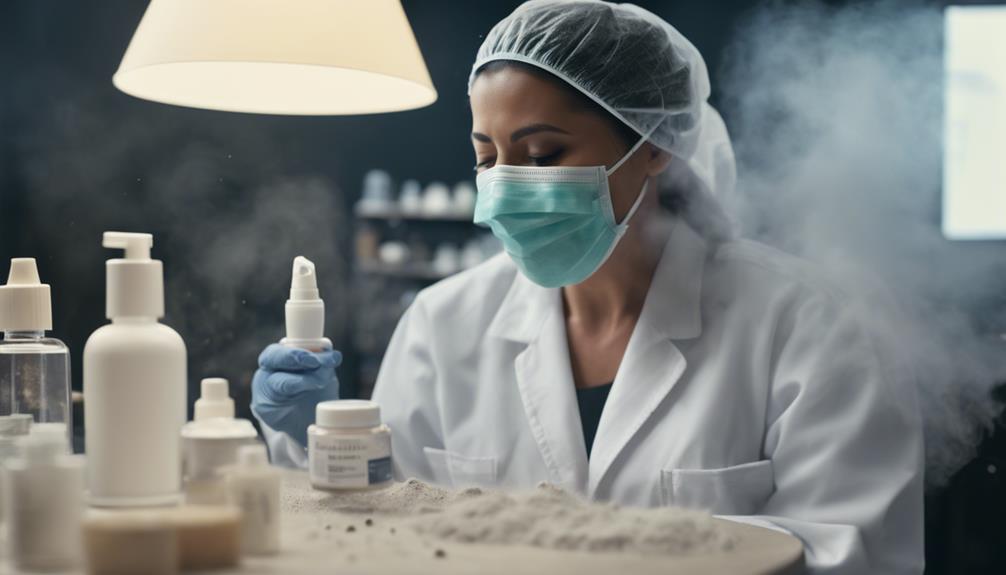
Constant exposure to airborne chemicals and particles in nail salons can pose a significant risk to nail technicians' respiratory health. The inhalation of volatile organic compounds (VOCs) from nail polish, acrylics, adhesives, and other salon products can lead to various respiratory issues. These VOCs can irritate the respiratory tract, causing symptoms such as coughing, wheezing, shortness of breath, and exacerbating conditions like asthma. Additionally, the fine particles produced during filing, buffing, and shaping nails can be inhaled, leading to respiratory problems.
To combat these risks, nail technicians should prioritize good ventilation in their workspaces, use personal protective equipment like masks, and take regular breaks outside to breathe in fresh air. Innovations in salon ventilation systems, such as advanced air filtration systems and localized exhaust ventilation near workstations, can help reduce the concentration of airborne pollutants. Furthermore, using low-VOC or VOC-free products whenever possible can also contribute to a healthier work environment for nail technicians, minimizing the chances of developing respiratory issues.
Musculoskeletal Problems
Excessive repetitive motions and prolonged periods of sitting in awkward positions can lead to musculoskeletal problems among nail technicians. These issues can impact the hands, wrists, arms, shoulders, neck, and back, causing discomfort and potentially leading to more serious conditions if not addressed promptly. To prevent musculoskeletal problems and promote overall well-being, nail technicians can consider the following innovative strategies:
- Implementing ergonomic tools and equipment designed to reduce strain on the body.
- Practicing regular stretching exercises to improve flexibility and prevent stiffness.
- Investing in adjustable furniture that allows for proper alignment and support during work.
- Utilizing wrist supports and padding to cushion pressure points and reduce the risk of injury.
- Taking short breaks between appointments to rest and reset posture, promoting circulation and reducing muscle fatigue.
Allergic Reactions
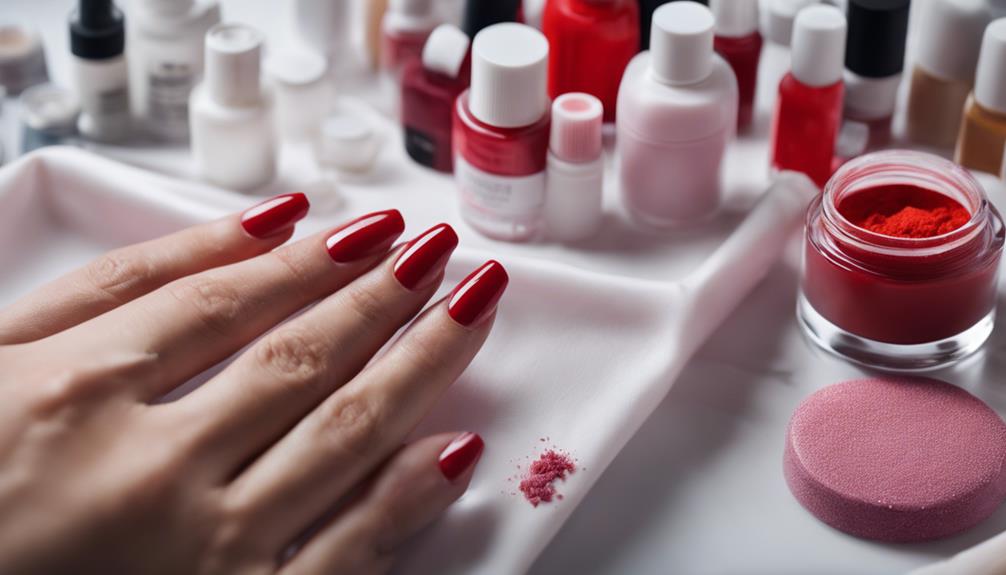
Nail technicians may develop allergic reactions to various chemicals commonly used in nail products. These reactions can range from mild irritation to severe responses. It's crucial for technicians to be aware of the potential allergens present in the products they work with daily to prevent these reactions. Here is a breakdown of some common allergens found in nail products:
| Allergen | Description |
|---|---|
| Formaldehyde | Used in nail hardeners and polish |
| Toluene | Present in many nail polishes |
| Methacrylates | Found in acrylic and gel products |
| Dibutyl Phthalate | Often used in nail polish formulas |
| Parabens | Used as preservatives in nail products |
Frequently Asked Questions
What Are Some Ways Nail Technicians Can Protect Themselves From Chemical Exposure Risks?
To safeguard against chemical exposure risks, nail technicians should implement proper ventilation systems, wear protective gear like gloves and masks, regularly update training on handling chemicals, and ensure workspaces are well-ventilated to promote a healthier environment.
Are There Any Specific Skin Disorders That Are More Common Among Nail Technicians?
Skin disorders commonly seen among nail technicians include contact dermatitis, fungal infections, and irritant or allergic reactions. These conditions may result from prolonged exposure to chemicals in nail products. Proper protective measures and hygiene practices can mitigate risks.
How Can Nail Technicians Prevent Respiratory Issues While Working?
To prevent respiratory issues while working, nail technicians should ensure proper ventilation in the salon, wear masks designed to filter out fumes and dust, take regular breaks in fresh air, and consider using less toxic products.
What Are Some Common Musculoskeletal Problems That Nail Technicians May Experience?
Nail technicians may experience musculoskeletal issues due to repetitive tasks like filing and painting. Common problems include carpal tunnel syndrome, tendonitis, and neck strain. Proper ergonomics, regular breaks, and stretching exercises can help prevent such issues.
How Can Nail Technicians Identify and Manage Allergic Reactions to Products Used in Their Work?
Nail technicians can identify allergic reactions by monitoring symptoms like redness or swelling. Managing involves using hypoallergenic products, wearing gloves, and maintaining good ventilation. Seeking medical advice promptly is crucial. Training and awareness can prevent potential risks.



